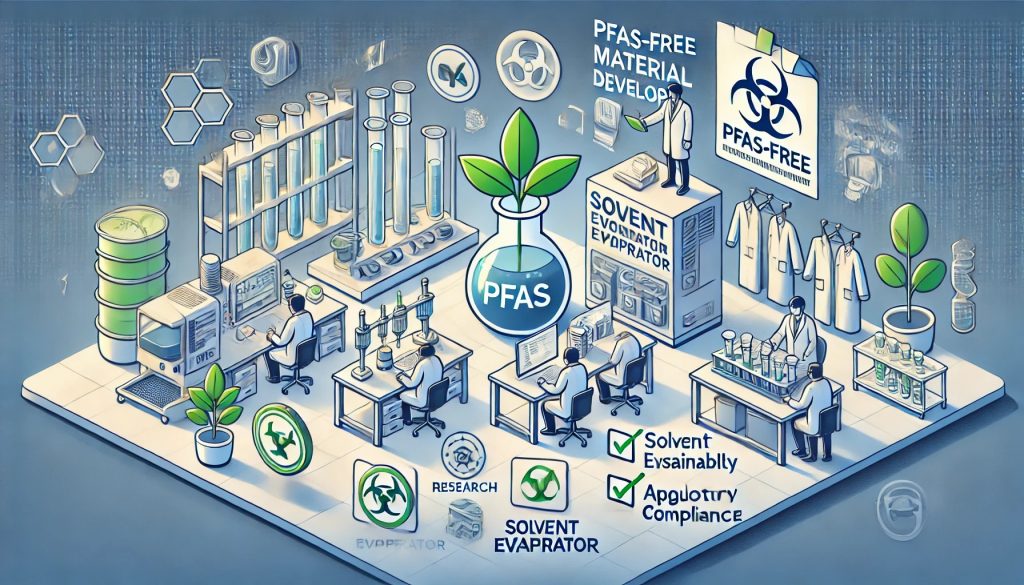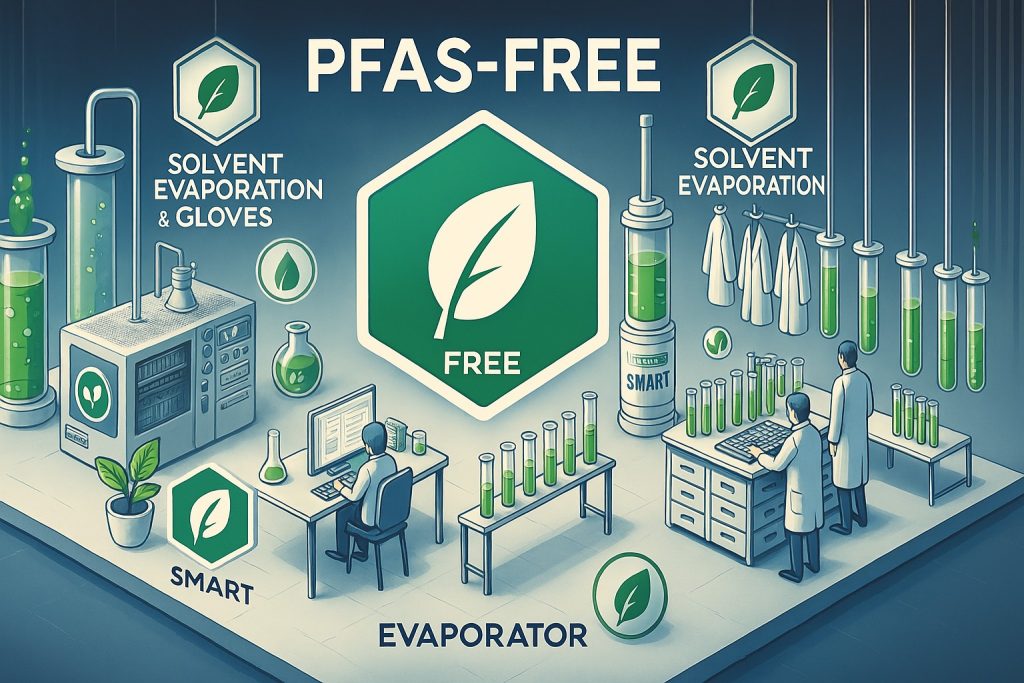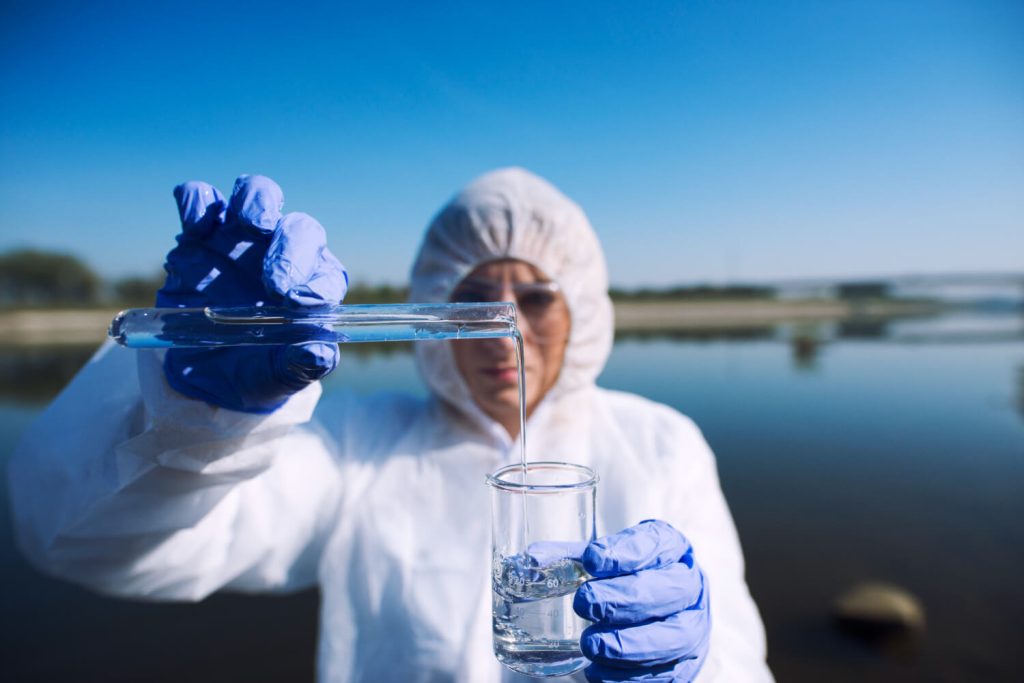Navigating the Future: How PFAS Regulations Are Changing the Semiconductor, Medical, and Chemical Industries in the U.S.
Did you know that critical products in the semiconductor, medical, and chemical industries face new challenges due to PFAS regulations? PFAS, or “forever chemicals,” linger indefinitely in the environment and are causing stricter compliance rules. Businesses must now quickly adapt, finding safer ways to handle solvents without sacrificing efficiency. This article explores the impacts and why it matters.
Image by aleksandarlittlewolf on Freepik
<Index>
1. What Are PFAS and Why Are They Regulated?
2. How PFAS Regulations Impact the Semiconductor Industry?
2-1. PFAS in Semiconductors
2-2. Challenges Faced by the Industry
2-3. Real-world Impact on Companies
2-4. Future Outlook and Solutions
3. How PFAS Regulations Impact the Medical Industry?
3-1. PFAS in Medical Applications
3-2. Challenges Faced by the Medical Industry
3-3. Real-world Impact on Medical Companies
3-4. Future Outlook and Solutions
4. How PFAS Regulations Impact the Chemical Industry?
4-1. PFAS in Chemical Manufacturing
4-2. Challenges Faced by the Industry
4-3. Real-world Impact on Companies
4-4. Future Outlook and Solutions
5. Summary: Adapting to New PFAS Regulations
1. What Are PFAS and Why Are They Regulated?
This was covered in our previous article, “What Are PFAS?” For more details, refer to the full article.
2. How PFAS Regulations Impact the Semiconductor Industry?
![]()
2-1. PFAS in Semiconductors
The semiconductor industry depends on PFAS chemicals during manufacturing, especially in processes like photolithography. PFAS are used because they can withstand very high temperatures and harsh chemicals, which is vital for making tiny, precise parts in computer chips.
2-2. Challenges Faced by the Industry
Now that governments are tightening PFAS regulations, semiconductor companies need to find safer alternatives or risk production delays and penalties. Meeting these new rules is expensive. Companies must invest in new machines, research new materials, train employees, and make sure their new processes are just as reliable and accurate. This change takes time, money, and effort.
2-3. Real-world Impact on Companies
Some major semiconductor companies are already testing PFAS-free alternatives as part of their effort to meet stricter environmental regulations. These companies are testing alternative materials under real-world manufacturing conditions to evaluate their durability, thermal resistance, and chemical stability. These new materials are being used in trial production lines to check their performance under real-world conditions.
Another promising development area is water-based, PFAS-free photoresists, which are essential in chip-making processes like photolithography. However, these alternatives still require extensive testing to ensure they match the quality, durability, and precision of traditional PFAS-based materials. This includes checking how they perform under different temperatures, how long they last, and whether they can maintain high accuracy in micro-scale production steps.
These tests take time and require advanced laboratory tools, skilled researchers, and coordination between materials scientists and engineers to ensure these materials meet industry standards.
To make these new materials work, labs use equipment like Smart Evaporators. These machines help remove solvents and prepare samples, ensuring materials are high-quality. Studies by the European Chemicals Agency (ECHA) show that solvent evaporation is essential for making PFAS-free materials stable and effective.
Even though progress is being made, the transition is expensive and complex. Large companies are better able to handle the costs, but smaller manufacturers may struggle to keep up.
2-4. Future Outlook and Solutions
To succeed, semiconductor companies must keep researching and work with other companies to share ideas and findings. Programs like the Green Chemistry & Commerce Council (GC3) and ECHA help connect businesses and support the shift to PFAS-free materials.
Smart Evaporators and similar tools make it possible to test new chemical materials more easily by assisting with solvent removal and concentration.
Discover the Smart Evaporator™: The Safer, Simpler Solution for Solvent Removal
3. How PFAS Regulations Impact the Medical Industry?

3-1. PFAS in Medical Applications
The medical industry uses PFAS chemicals in many products, such as catheters, surgical gowns, tubes, and implantable parts. PFAS are useful because they are strong, resist liquids, and help keep medical tools clean and sterile in tough environments.
3-2. Challenges Faced by the Medical Industry
But new laws are making it harder to keep using PFAS. Medical companies now need to find safer materials quickly. This is hard because they have to spend a lot of money on research, testing, and updating their equipment. Medical products must also be extremely safe and accurate, so any new materials must meet rigorous standards. Switching to new materials is challenging while still keeping the same performance and safety.
3-3. Real-World Impact on Medical Companies
Some big medical companies have started testing new, PFAS-free materials in response to increasing regulatory pressure and the need to reduce environmental impact. For example, they are experimenting with polylactic acid (PLA) for medical coatings, which is biodegradable and derived from renewable sources. Silicone is being explored as a safer alternative for flexible tubing, and plant-based water-repellent treatments are being evaluated for use in surgical gowns. These new materials must go through strict testing to ensure they meet medical-grade standards for durability, sterility, and performance. Because of this, the trials require not only a significant investment of money and time but also collaboration between materials scientists, regulatory experts, and production teams.
To help with this, labs use evaporators. These tools remove solvents and concentrate the important parts of a sample, which could help test how good the new materials are.
Still, problems exist. Many new materials are not as strong or safe as PFAS. Some break down too quickly or can’t pass important safety tests, making them hard to use in hospitals.
Smaller companies have an even harder time because they don’t have as much money. They often need help from universities or government programs to make the switch to PFAS-free materials.
3-4. Future Outlook and Solutions
To solve these problems, medical companies need to work faster and smarter. They should team up with other industries and share ideas.
Smart Evaporators and other lab tools make it possible to test new materials and improve them. With teamwork and better tools, medical companies can move away from PFAS, protect patients, and stay competitive.
Discover the Smart Evaporator™: The Safer, Simpler Solution for Solvent Removal
4. How PFAS Regulations Impact the Chemical Industry?

4-1. PFAS in Chemical Manufacturing
The chemical industry uses PFAS chemicals in many products because they can resist heat, strong chemicals, and harsh conditions. PFAS are essential in making coatings, lubricants, firefighting foams, and other special chemicals used in many different fields.
4-2. Challenges Faced by the Industry
New PFAS rules make things more complicated for chemical companies. To follow the rules, companies must spend money on better technology, research new materials, and change how they make products. Waste disposal is also watched more closely, which adds more cost and work. New materials also need to work well and be easy to get, which makes things more complicated.
4-3. Real-World Impact on Companies
Some large chemical companies have faced lawsuits and lost money because of pollution from PFAS in the past.
To fix this, many are trying safer materials, like fluorine-free surfactants, biodegradable coatings, and non-fluorinated plastics. These are safer because they break down in nature and don’t build up in people or animals. Some new materials still don’t match PFAS in strength, heat resistance, or durability. For example, some biodegradable coatings degrade too quickly under high temperatures, and some fluorine-free surfactants struggle to maintain stability in industrial settings. However, researchers are working on enhancing their properties through chemical modification, material blending, and advanced testing methods to bring them closer to PFAS-like performance.
To meet environmental rules, many chemical companies now use advanced cleaning systems to reduce PFAS pollution. These include filtration units that trap contaminants, activated carbon systems that absorb PFAS molecules from wastewater, and biological treatments using microbes that can break down certain PFAS compounds. In some cases, companies combine these methods to improve effectiveness and ensure treated water meets discharge standards. These cleanup technologies are becoming essential as regulators increase pressure on companies to prevent further contamination and remediate existing sites.
While working on new materials, labs use tools like evaporators to remove solvents and clean samples.
Small companies often have a harder time because they don’t have enough money or staff to keep up with the changes.
4-4. Real-World Impact on Companies
Chemical companies must focus on new ideas and work with others to move forward. Projects like GC3 and ChemSec’s PFAS Movement help companies share knowledge and create better, safer chemicals.
Evaporators help a lot with testing these new materials by removing solvents and concentrating ingredients. This makes it easier for companies to switch to PFAS-free options that are safer and better for the environment.
Discover the Smart Evaporator™: The Safer, Simpler Solution for Solvent Removal
5. Summary: Adapting to New PFAS Regulations
PFAS regulations are transforming how semiconductor, medical, and chemical companies operate. These rules are pushing businesses to find safer, sustainable alternatives that can maintain performance without environmental or health risks.
To comply, companies must invest in research, update production methods, and implement stricter safety measures. This transition is not easy, but it’s achievable with the right tools and collaboration.
Laboratory technologies like the Smart Evaporator help accelerate this shift by enabling precise solvent removal and efficient sample preparation—critical for developing and validating PFAS-free materials.
By acting early and embracing innovation, businesses can stay ahead of regulations, protect the environment, and remain competitive.
Discover how Smart Evaporation can simplify your transition away from PFAS chemicals.
👉 [Learn More About Smart™ Evaporation Here]
Discover the Smart Evaporator™: The Safer, Simpler Solution for Solvent Removal
📚 Related Articles
- What Are PFAS? Understanding Their Impact on the Environment, Health, and Industry👉 Read the full article here
- Latest Trends in Evaporation Technology: What Equipment Will Laboratories Need in the Future?👉 Read the full article here
- Frustrated with Tedious Rotavap Work? Make Evaporation Easier Than Ever👉 Read the full article here
Sources
- EPA: PFAS Explained
- CDC: PFAS and Your Health
- European Chemicals Agency (ECHA): PFAS Restriction Proposal
- Green Chemistry & Commerce Council (GC3)
- FDA: PFAS in Medical Devices
- Clean Production Action. PFAS-Free Products & Alternatives
- U.S. EPA – Safer Choice: Alternatives to PFAS
- U.S. EPA – Reducing PFAS in our lives
- GreenScreen for Safer Chemical
- ChemSec – SIN List
- OECD (2021). Synthesis Paper on PFASs

